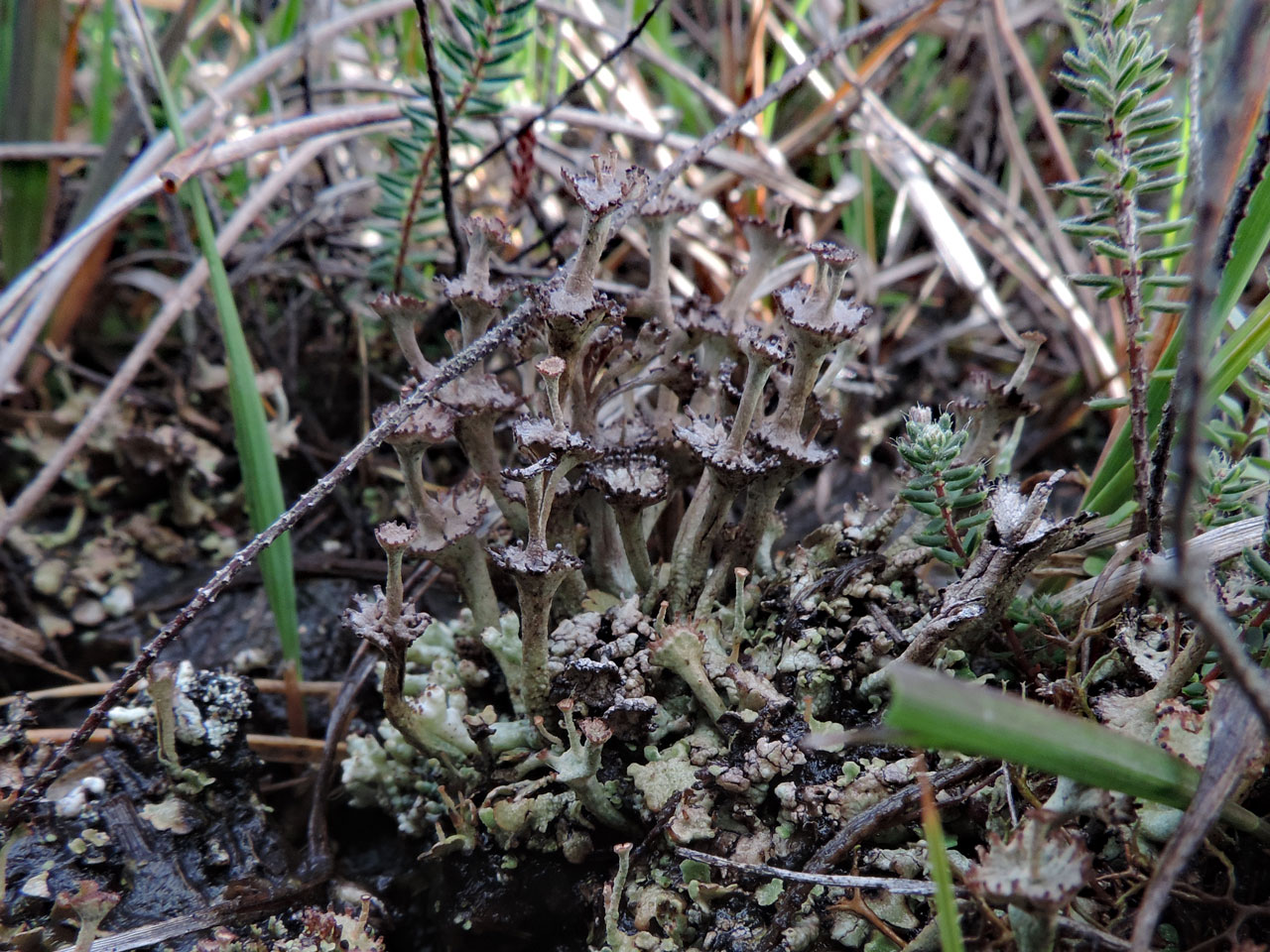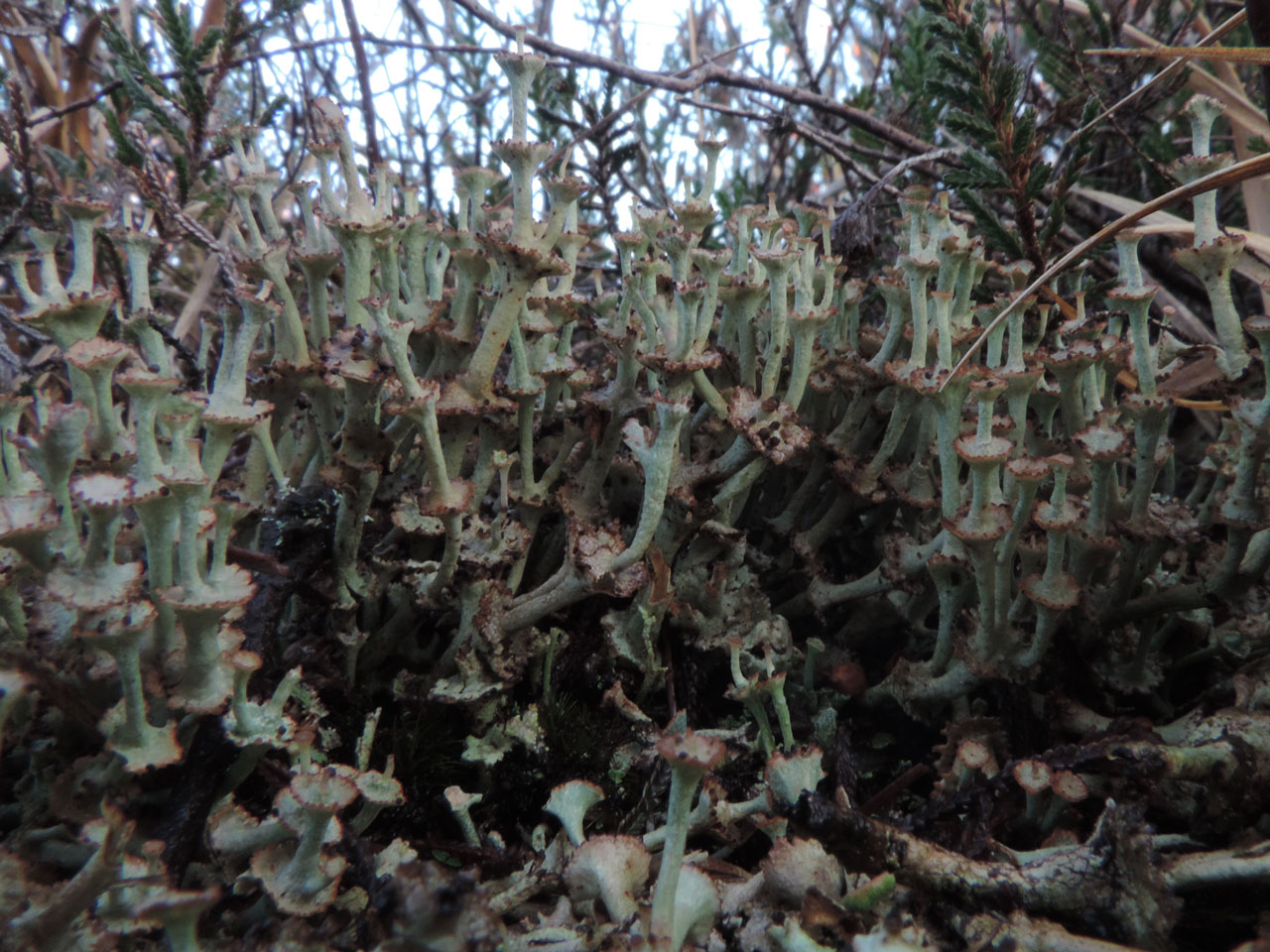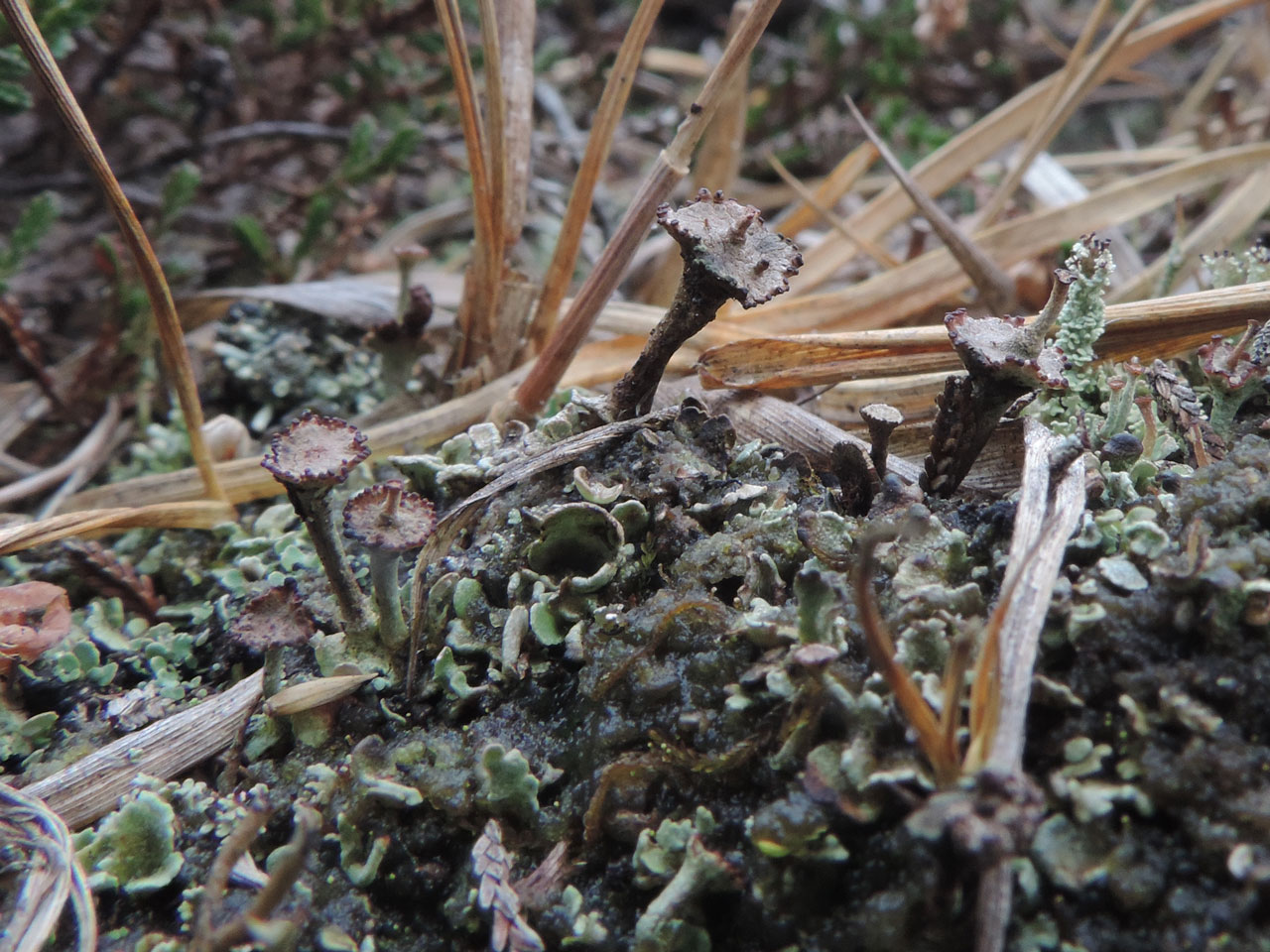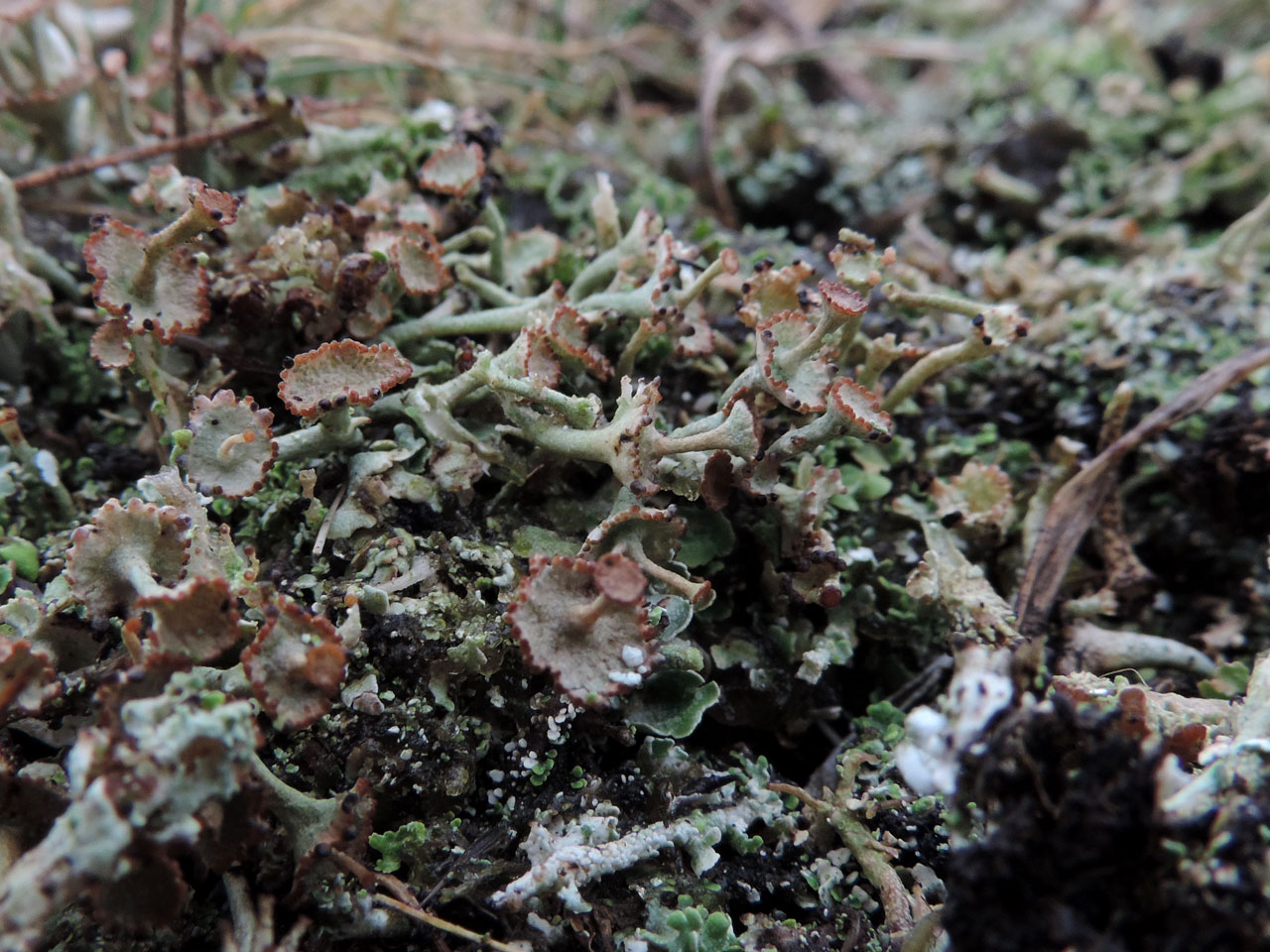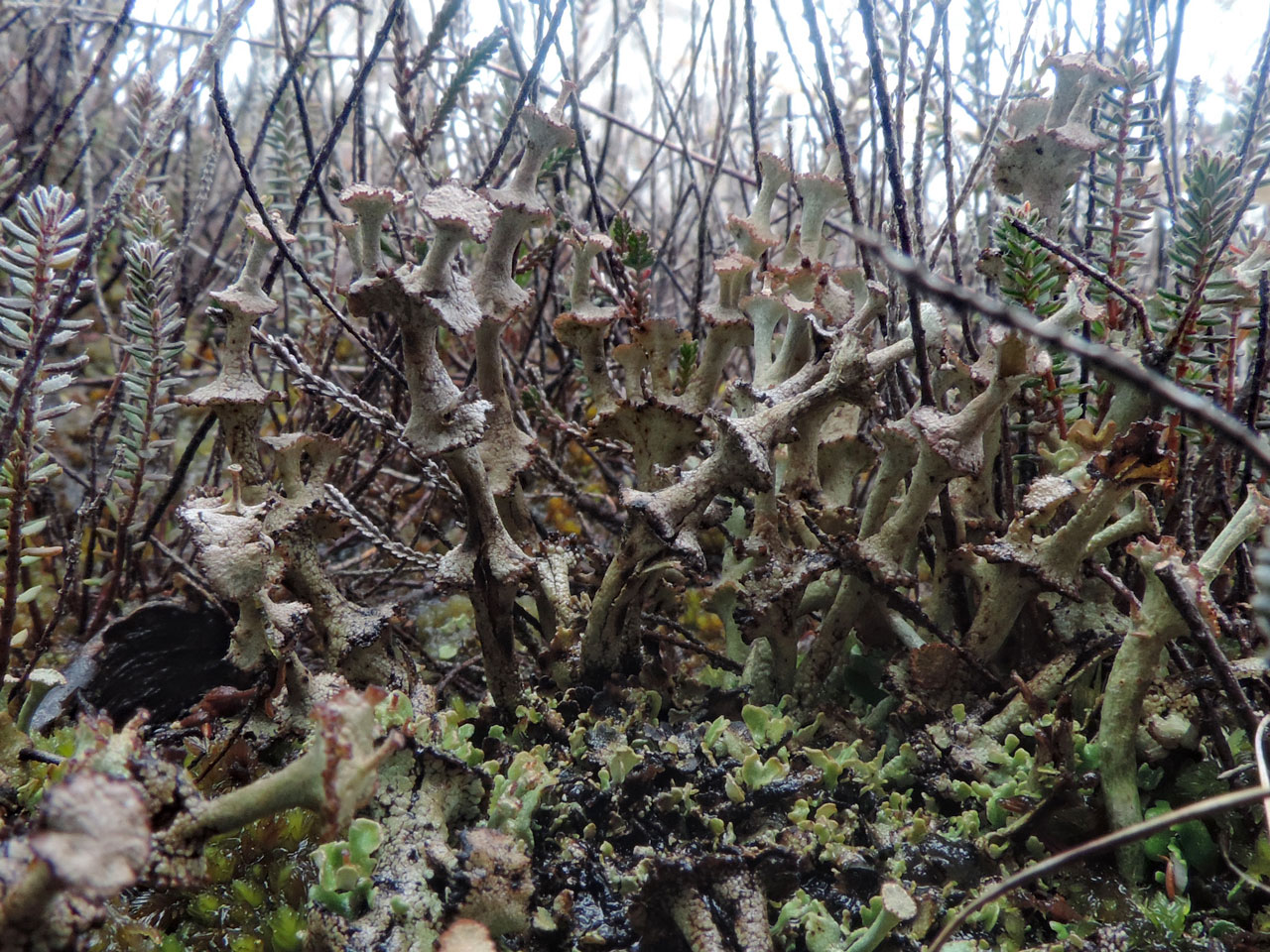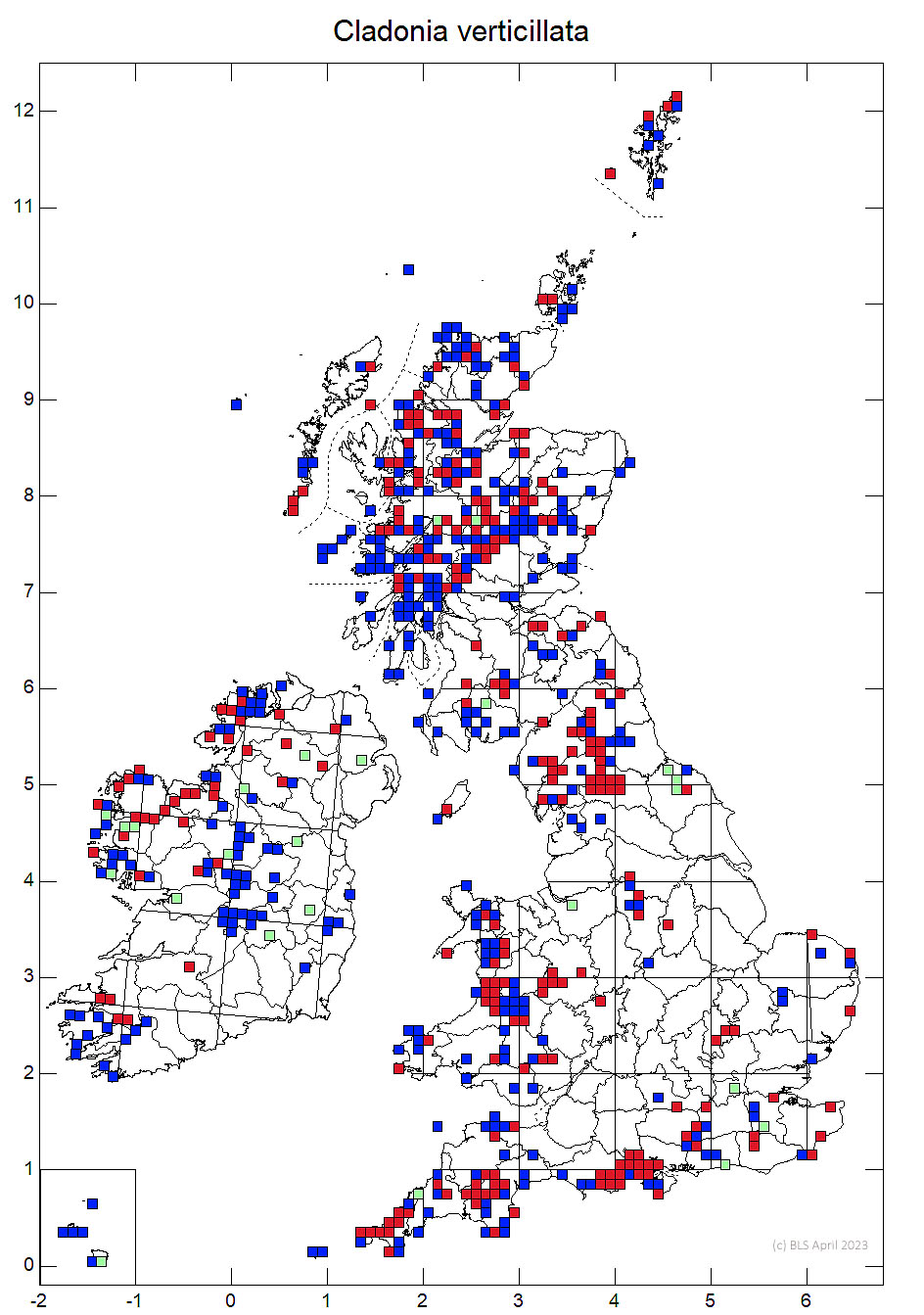Mature thalli of this grey-green Stacking Cup Cladonia are visually striking with tiers of cups stacked one on the other growing from the centre of the cup below. It is a species of low productivity acid habitats and may have been over recorded for the similar, but usually browner, Cladonia cervicornis which can also have stacking cups, but less frequently, They mainly differ in the form of the basal squamules. The basal squamules of C. verticillata are rounded and little indented compared to the elongated and indented to dissected basal squamules of C. cervicornis. The squamules disappear on mature specimens but these are very visually distinctive with their multiple layers of grey-green cups.
Similar to Cladonia cervicornis, but paler green-grey, with smaller rounded basal squamules that are evanescent in mature material, and the podetia with more regular cups, to 5 cm tall, which are ± abruptly tapered to the stalk and form proliferating tiers, in 2–3 (–7) levels from the centre of the cup. The chemistry is similar. Thallus C–, K–, KC–, Pd+ red, UV– (fumarprotocetraric acid).
Cladonia cervicornis has cups that may also proliferate (and in the past these vigorous C. cervicornis specimens were often miss-recorded as C. verticillata), but they are generally less well-organized with fewer verticillate layers. Most critically, it has larger, more elongated and indented to dissected basal squamules. Cladonia verticillata is also a paler green-grey colour compared to the browner colours of C. cervicornis.
Well developed Cladonia pulvinata with podetia, is closer to C. verticillata in appearance than C. cervicornis, with rounder basal squamules than than latter species, but its is usually found as a sterile squamule mat or with few podetia The podetia are more gracile than those of either species, and rarely proliferate, and then only for up to two tiers. Most distinctively it is Pd+ yellow.
Low productivity open heaths, especially in wetter heathland sites and mine spoil-heaps. Typically found in more acidic and damper habitats than Cladonia cervicornis. Tolerant of controlled burning of heaths, which helps to maintain the required open habitats.

Widespread in the uplands and in areas with extensive acid soils in the lowlands, but potentially somewhat over recorded, with Cladonia cervicornis with multiple tiers of podetia recorded in error as C. verticillata in the past.
Widespread in the uplands but potentially threatened in the lowlands from habitat loss and shading from vegetation overgrowth from the decline or cessation of extensive grazing and controlled burning in lowland heathlands.
Pino-Bodas, R., Sanderson, N., Cannon, P., Aptroot, A., Coppins, B., Orange, A. & Simkin, J. (2021). Lecanorales: Cladoniaceae, including the genera Cladonia, Pilophorus and Pycnothelia. Revisions of British and Irish Lichens19: 1-45. Link
Sanderson, N. A. (2016) The New Forest Heathland Lichen Survey 2011 – 2015. A report by Botanical Survey & Assessment to Natural England, Forest Enterprise & The National Trust. Link
Van Herk, C.M. & Aptroot, A. (2003). A new status for the Western European taxa of the Cladonia cervicornis group. Bibliotheca Lichenologica 86: 193–203. Link
Text Neil A Sanderson, based Pino-Bodas et al (2021)
